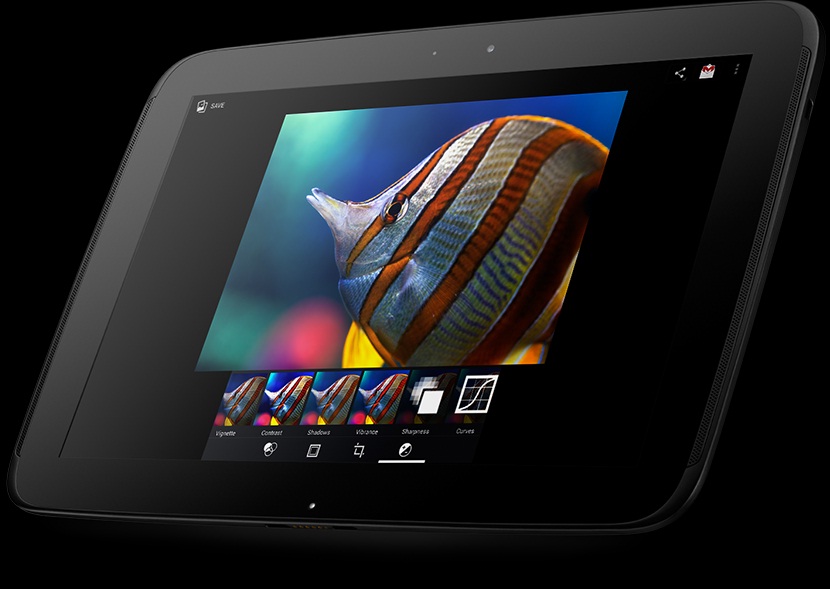Tablets evolved to be the latest trend, beating the widely anticipated netbooks with the original debut of iPad. Since then manufacturers from around the world have crafted their own versions, but mainly it has been a battle between the Apple iPad and Android Slates, until most recently Microsoft unveiled its Surface tablet running Windows RT, joining the competition. The most recent member to the stage is the Google Nexus 10, the flagship tablet product of Google. Nexuses are bound to be winners; it has at least been the case so far, so does Google Nexus 10 live up to its hype? The following is a short discussion about the special features of the high end slate and its capacity to stand up to the competition.
Hardware of Nexus 10:
Nexus 10, manufactured by Samsung, is the flagship tablet product of Google, and to claim the throne it packs the highest specifications yet to be seen on a tablet. This includes a dual core 1.7 GHz processor, a 2560 by 1600 pixel high resolution (the highest resolution ever to be achieved by a 10 inch tablet yet) HD capacitive touch screen with 299 ppi pixel density, 2 GB of Random Access Memory and a huge 9000 mAh battery. Nexus 10 is offered in two variations as 16 GB or 32 GB; however an external memory slot is unavailable in both. The rear end camera boasts a 5 Mega pixel resolution matching the iPad’s 5 MP iSight Camera. Nexus 10 also incorporates a 1.9 MP secondary camera for video calling.
Body Appearance and Structure of Nexus 10:
Nexus 10 features a somewhat round-cornered design with a relatively wider bezel. The body has been mainly built with plastic materials to reduce the weight, and weights merely 603 g s beside its numerous stacked features in hardware departments. This is really encouraging, if you are hand holding the device for a long period of time. Nexus 10 has been designed to be used on landscape mode by default, simulating a typical PC screen, however with a 16:9 aspect ratio.
Graphics and Sound Features of Nexus 10:
The powerful graphics engine and the high performance processors make HD gaming, multi tasking seamless and effortless. The built in speakers are of high quality and produce superb audio, decent enough to hold on the thoughts about investing on a separate headset. The high capacity battery is powerful enough to hold on the charge for more than a single day.
Compatible Software’s of Nexus 10 :
Nexus 10 is powered by latest version of android, Android 4.2 out of the box. Users get to enjoy several tweaks to the original jellybean debuted several months ago, with the new upgrade. Those include the new Google Now feature, modified notification tray, support for multiple users and many more. The multiple user support is really great, which allows different users to have customized homescreens, apps and games just like with a regular PC, yet to switch between the users you don’t want to log off your existing account.
Photo Features of Nexus 10:
Nexus 10 allows you to edit your photos on its brilliant display, much more effectively, and you can share your favorites with your friends with a simple tap. Photo Sphere camera feature which lets you create amazing 360 panoramas just like in Google maps’ street view and the built in HDR feature works with this too, however since a tablet is not essentially the most ideal shooter you can have, such processes are more of personal tastes, where Nexus 10 is concerned. Gesture typing feature, allowing you to slide the fingers over the virtual keyboard, improved dictionaries and text to speech features, makes messaging and typing emails a breeze. With nearly 670 000 apps on Google Play, you can possibly find any app you’d ever want, and remember, the market place is still growing every day.
Competition in the Market:
As always is the case, some top rivals await to give the new member a battle for ultimate glory. On the top of the lineup lie the popular iPad (4th generation) by Apple and Galaxy Note 10.1 by Samsung. A less obvious rival would be the Amazon’s Kindle Fire HD 8.9 tablet. On performance department, Nexus 10 essentially beats the rivals with its powerful processor, same holds true with regard to the display, with the iPad falling behind. When memory compartment is considered Galaxy Note 10.1 scores a point since it supports expansion of memory via MicroSD, where as both the Nexus 10 and iPad are confined to their built in memory. The attractive price tag is what gives the Nexus 10 a lead ahead of the competitors, costing around $ 399 for a 16 GB version where as the Samsung Galaxy Note 10.1 and the iPad 4 each costs around 499$ for 16 GB WiFi versions.





